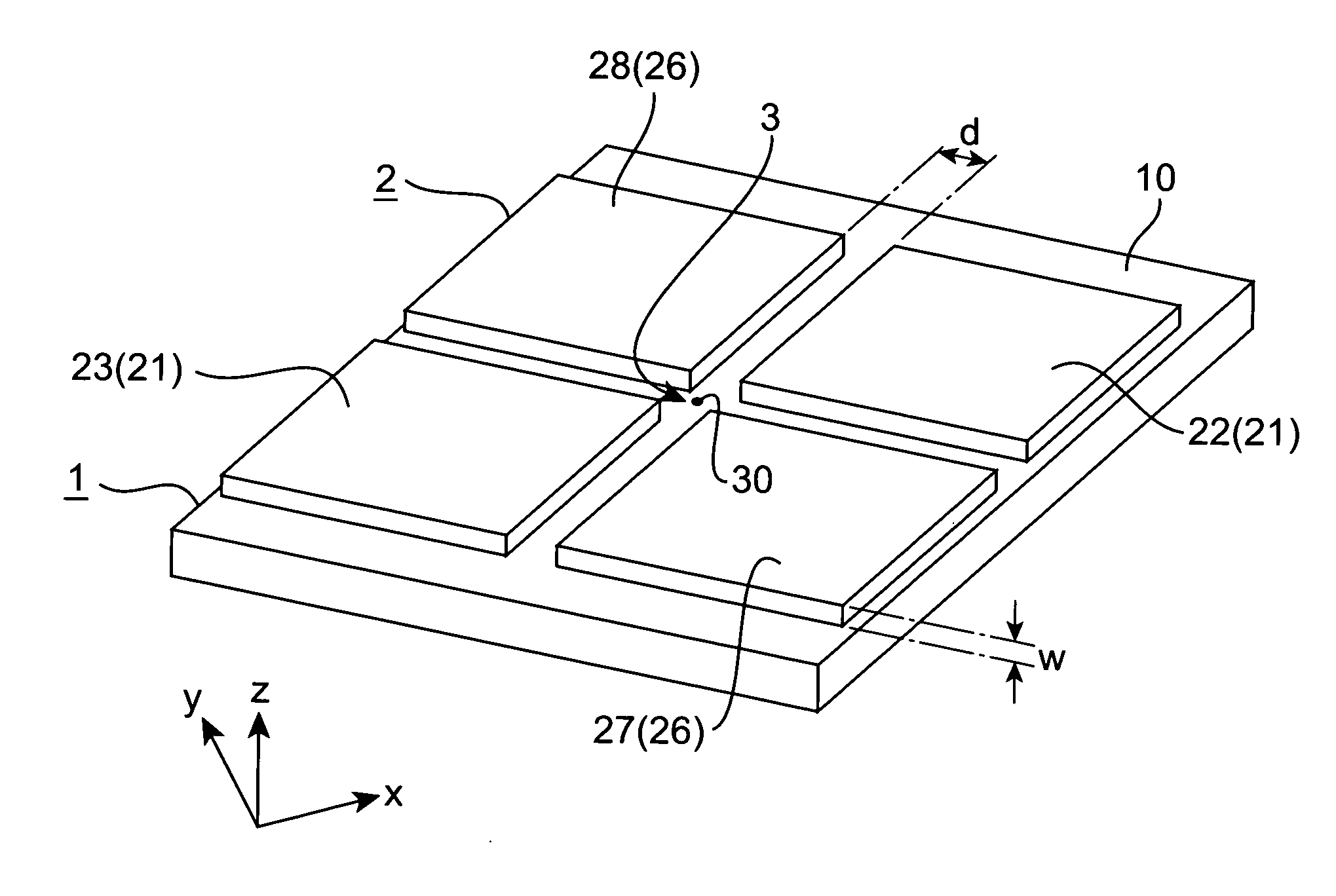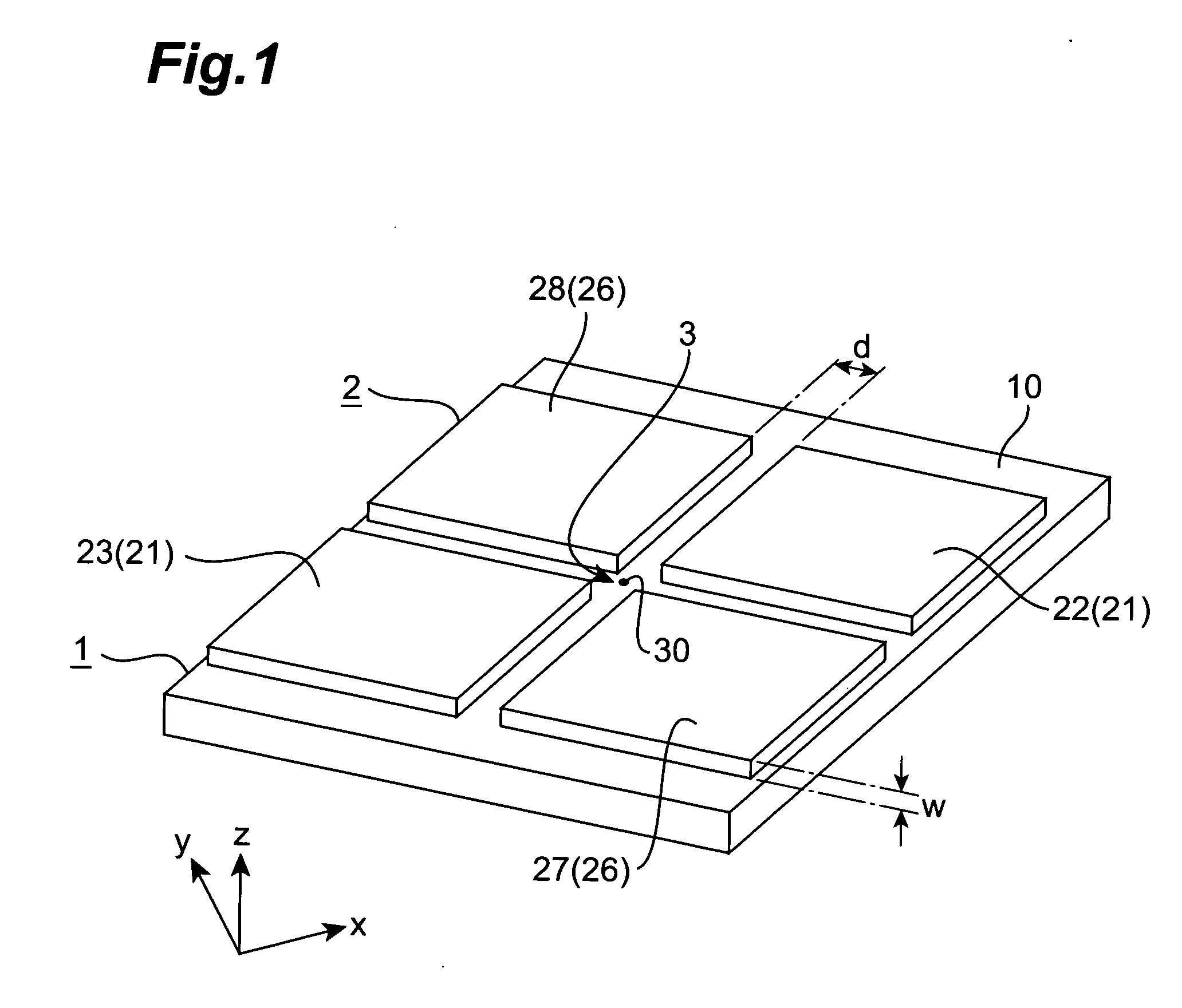Atomic device
a technology of atomic devices and insulating plates, applied in nuclear engineering, separation processes, nanoinformatics, etc., can solve the problems of difficult shielding of magnetic fields, ohmic loss and thereby heat generation, and limitations of substrate integration, etc., to suppress the coupling of particles, good stability point, and long coherence time
- Summary
- Abstract
- Description
- Claims
- Application Information
AI Technical Summary
Benefits of technology
Problems solved by technology
Method used
Image
Examples
Embodiment Construction
[0033] Preferred embodiments of the atomic device according to the present invention will be described below in detail with reference to the drawings. The same elements will be described by the same reference symbols in the description of the drawings, without redundant description. It is noted that the dimensional ratios in the drawings do not always agree with those in the description.
[0034]FIG. 1 is a perspective view illustrating the configuration of an embodiment of an atomic device according to the present invention. This atomic device is an atomic substrate (atom chip) which uses a neutral particle trapped on the substrate, and includes a substrate 1 and an electrode pattern 2. In the description below, such a case will be mainly illustrated where a neutral atom is employed; however, in general, a neutral atom or a neutral molecule can be employed as a neutral particle.
[0035] For convenience of description, a coordinate system including x, y, and z axes is defined as follow...
PUM
 Login to View More
Login to View More Abstract
Description
Claims
Application Information
 Login to View More
Login to View More - R&D
- Intellectual Property
- Life Sciences
- Materials
- Tech Scout
- Unparalleled Data Quality
- Higher Quality Content
- 60% Fewer Hallucinations
Browse by: Latest US Patents, China's latest patents, Technical Efficacy Thesaurus, Application Domain, Technology Topic, Popular Technical Reports.
© 2025 PatSnap. All rights reserved.Legal|Privacy policy|Modern Slavery Act Transparency Statement|Sitemap|About US| Contact US: help@patsnap.com



